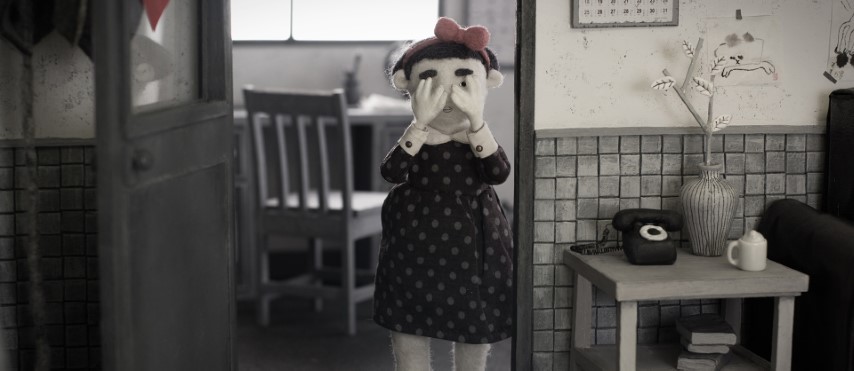‘Cross Currents’ artists explain their practices at Amelia Douglas Gallery
By Cheryl Minns, Arts Editor
The Cross Currents abstract art exhibit at the Amelia Douglas Gallery opened in August as part of the New West Cultural Crawl. On September 11, the artists—Dorothy Doherty, Kathryn Gibson, and Sande Waters—concluded the show the same way it began: with insight into their practice, and lots of audience engagement.
Doherty began the session with a brief history of her art, explaining how the paintings she had on display were created. Her three-piece, multi-coloured, abstract painting “Blue Rondo” was made while she listened to jazz musician Dave Brubek’s “Blue Rondo à la Turk.”
“Abstraction can be fun. It can be challenging. It can be exciting. It’s extremely versatile. It’s a good way to express yourself without being literal,” Doherty said.
Gibson spoke about how growing up in the country encouraged her to explore the world beyond her local surroundings, and create diverse art that reflects different flora, fauna, and histories. She also shared her frustration over people copying artists’ work; for example, an individual not wanting to pay an artist’s high price and instead having the painting reproduced in China for a fraction of the cost.
“Why do we continue to do this work and make more paintings?” Gibson said. “Because the process of making art fulfills a need to build meaning in order to understand the cycle of life.”
During the New West Cultural Crawl, Gibson and Waters collaborated to create a live abstract painting called “Restoration,” named after the subject matter of their discussion during the painting. Each artist added her own marks to the canvas, painted over the other’s marks, and eventually decided on what the painting’s final appearance would be—all while an audience watched them.
For the show’s closing, Gibson and Waters spoke about their collaborative paintings and what goes into creating such art.
“We choose a colour, then put some marks on, and then the painting starts evolving,” Waters said. “If I find I’m over on one side too much, we switch around because we do make different marks.”
“It only works if you can leave your ego at the door and you have no concern about what your partner is going to do, how it is going to evolve, and what the end results are,” Gibson said.
“Even though you have different talents, or strengths, or ideas, collaborating seems the way of the future for a lot of situations,” Waters said.
After explaining this type of artwork to the audience, the artists invited guests to make their own collaborative art by using the gallery’s materials donated by Opus Art Supplies. The instructions were simple: add a mark to a piece of paper, pass it to someone else in the audience, make a mark on someone else’s paper, and continue.
By the end of the session, the Douglas College students and community members had each contributed to one another’s artwork, creating a unique blend of artistic talents and perspectives.
The next exhibit at the Amelia Douglas Gallery will be Thunder in Our Voices, opening September 17. Curated by Drew Ann Wake, the exhibit features a collection of Linda MacCannell’s portraits taken during the Berger Inquiry when Aboriginal youths and elders spoke against a proposed pipeline project in the 1970s.
Wake will give a talk in the gallery about the exhibit on September 18.
The opening reception for Thunder in Our Voices will be held in the gallery on October 2 from 5:30 to 7 p.m. After the reception will be The Legacy of the Berger Inquiry panel discussion, featuring Wake, Michael Asch, Glen Coulthard, and Peter Stephenson.
To attend the free panel discussion, guests are encouraged to register at BergerLegacy.EventBrite.ca to guarantee a spot.
Thunder in Our Voices will be on display until October 23.

